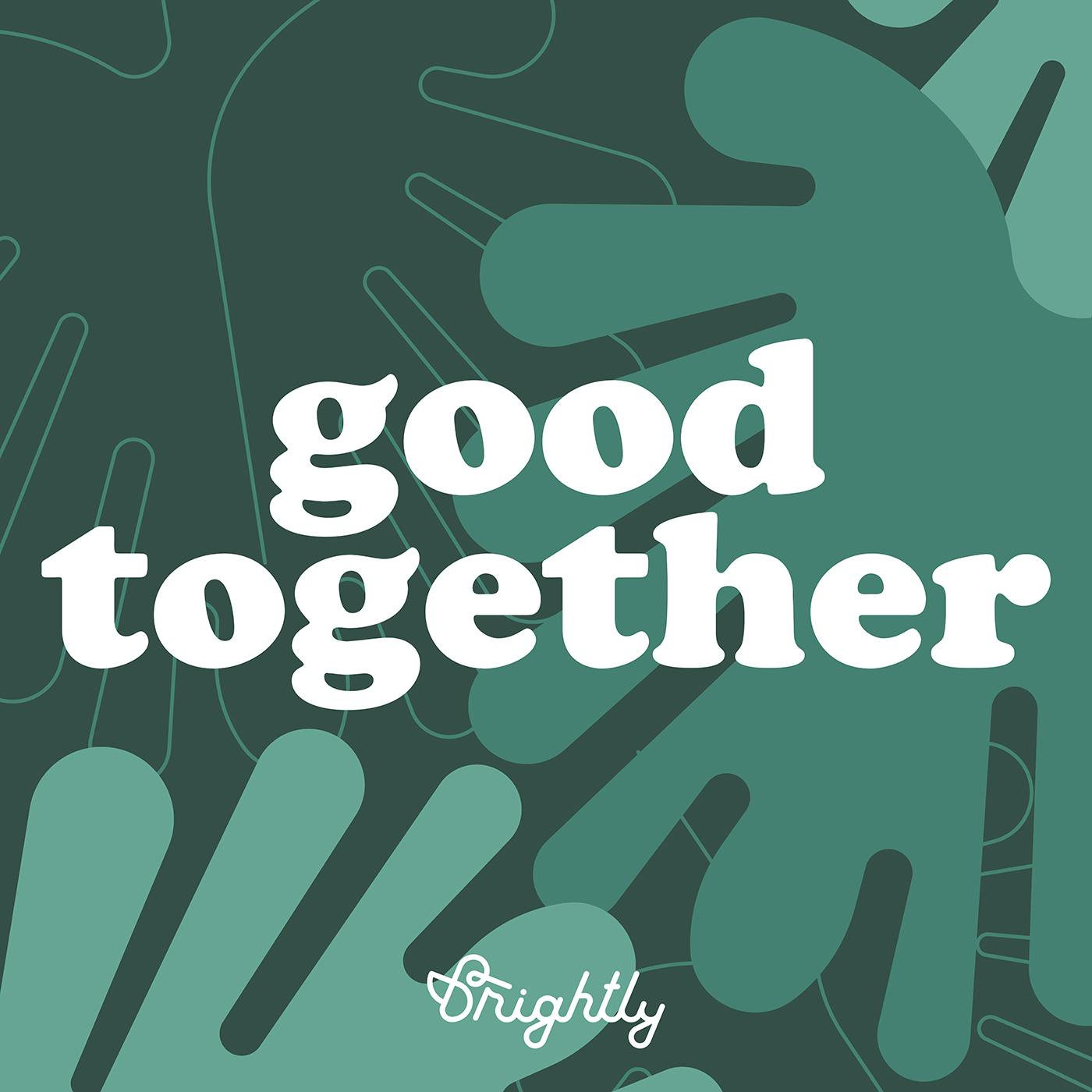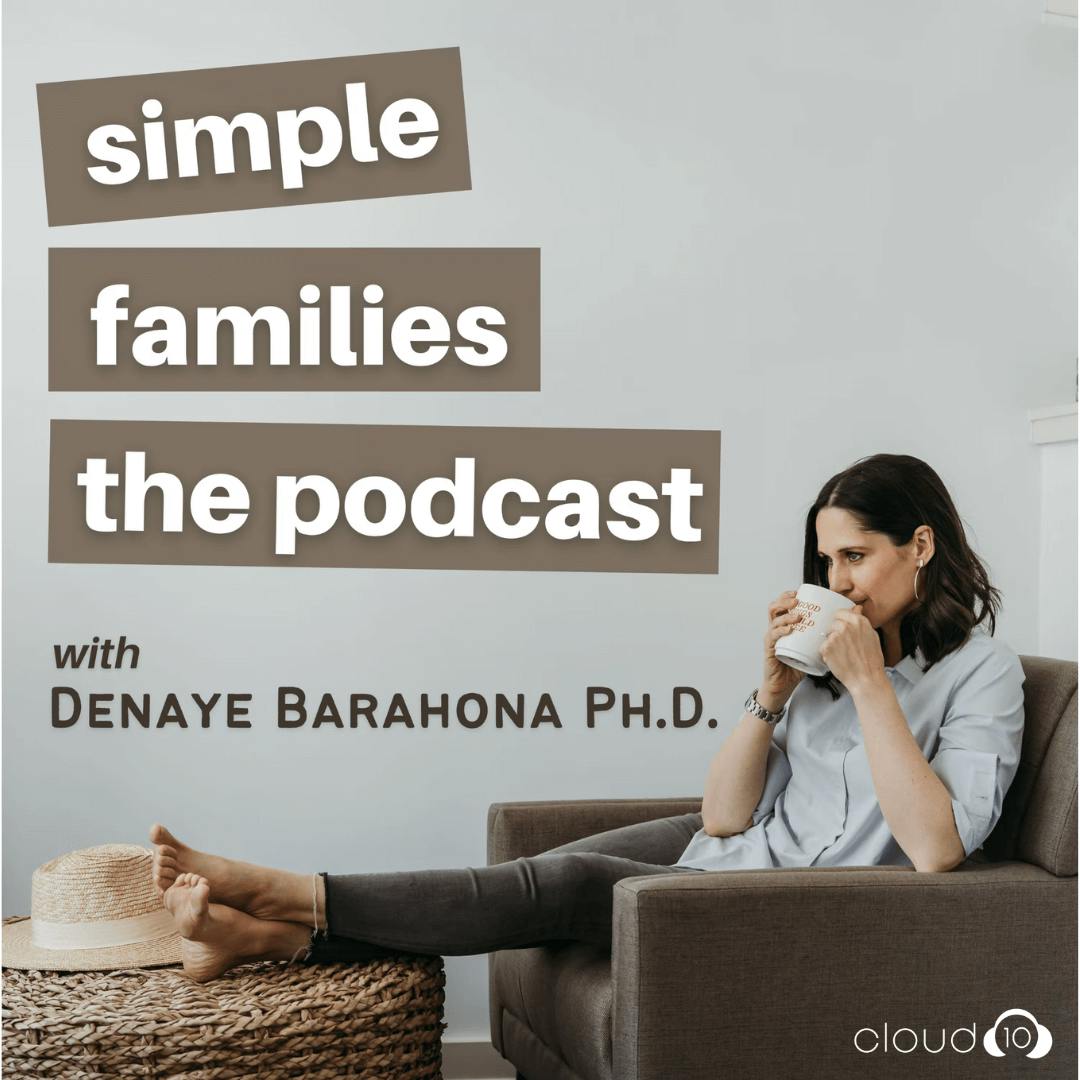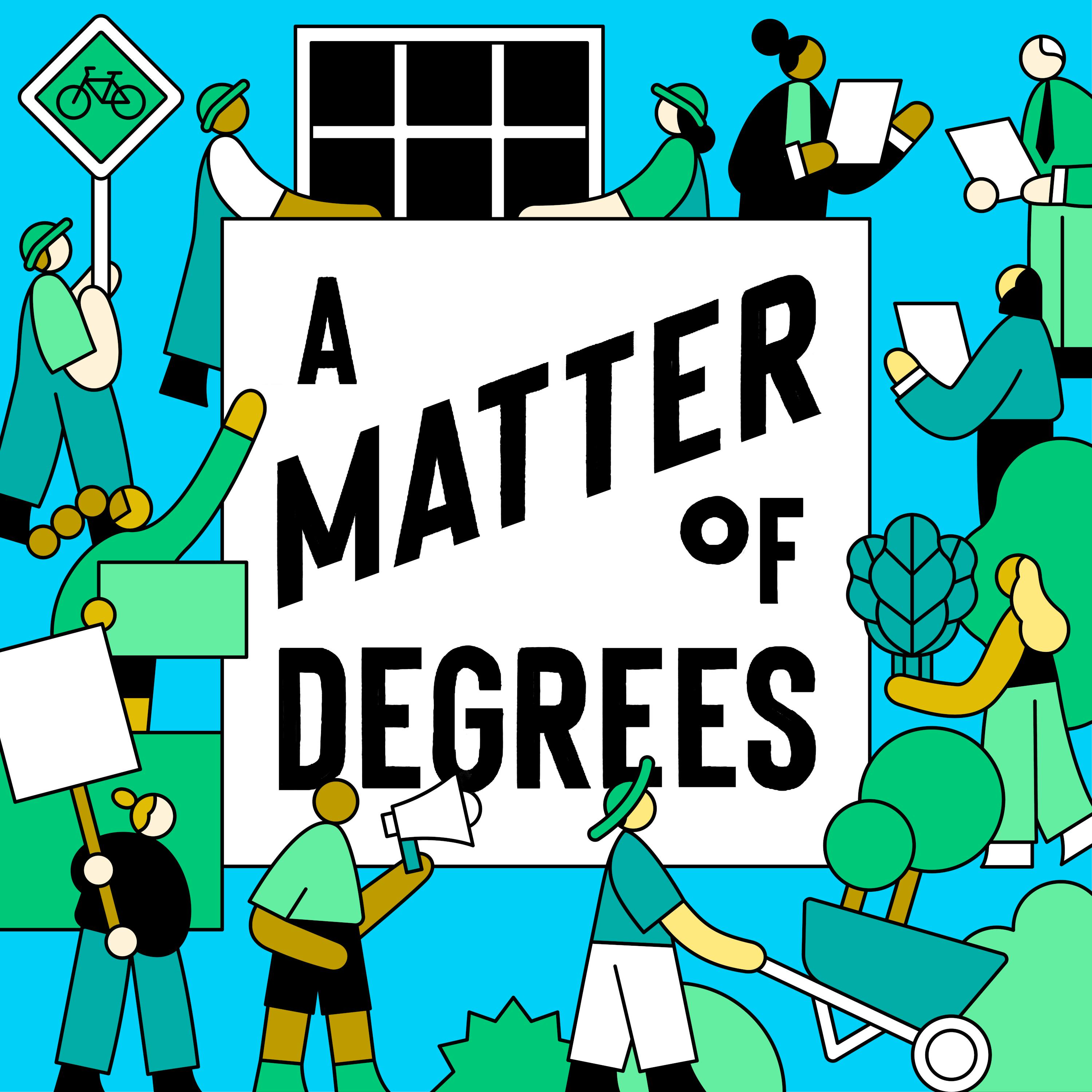
Sustainable in the Suburbs
Want to waste less, save more, and make your home a little more eco-friendly? Sustainable in the Suburbs is your go-to podcast for practical, judgment-free tips and real-life stories to help you build sustainable habits that actually stick.
Hosted by Sarah Robertson-Barnes — a suburban soccer mum, sustainability educator, and founder of the blog Sustainable in the Suburbs — this weekly show brings doable advice, honest conversations, and actionable ideas to help you waste less, spend smarter, and live more sustainably at home.
Because sustainable living doesn’t have to be perfect to matter — and you don’t have to do it all to make a big impact.
Start where you are, use what you have, and live a little greener.
Sustainable in the Suburbs
10: How to Refill in Your Own Containers for a Plastic-Free Pantry
Bringing your own containers to refill shops, markets, or even cafés is one of the easiest ways to cut down on single‑use packaging. It saves money, keeps your pantry organized, and helps shift the way we think about consumption.
In this episode of Sustainable in the Suburbs, I’m sharing how to make refilling feel like second nature as a sustainable living practice. You’ll hear practical tips for overcoming barriers to refilling (including how to choose the right containers and understanding store policies), how small mindset shifts can lead to refill at scale, and plenty of encouragement to get started where you are.
Takeaways
- Why refilling is one of the easiest ways to reduce waste.
- How a plastic‑free pantry can make life simpler and more organized.
- The money‑saving perks of bulk shopping.
- What mindset shifts often happen when you start refilling.
- Where to look for refill opportunities beyond zero‑waste stores.
- How to advocate for refill options everywhere.
One Small Shift
Pick one item you buy regularly — coffee, rice, snacks — and look for a place to refill it in your own container. That single change can make a surprising difference.
Resources
Household Waste Audit Workbook (FREE download)
Plastic-Free Pantry: How to Refill Your Own Containers (Blog)
Plastic-Free July: 31 Easy Swaps to Reduce Plastic Waste (Blog)
“Reusable containers safe during Covid‑19 pandemic, say experts” — The Guardian, June 22, 2020
Zero Waste Chef (Website)
The Zero Waste Chef Cookbook - Anne-Marie Bonneau
Bulk Barn - Reusable Container Program
Reusable produce and bulk bags
Connect With Me
Sustainable in the Suburbs is mixed and edited by Cardinal Studio
If you enjoyed this episode, I’d love it if you followed the show, shared it with a friend, or left a rating and review. Every little bit helps more people find Sustainable in the Suburbs — and live a little greener.
The hardest thing about refilling in your own containers is getting over that first, is it okay if I use my own jar moment? And here's how you do that. Welcome to Sustainable in the Suburbs, a podcast for the eco curious who want to live a greener life and are looking for a place to start. I'm your host, Sarah Robertson Barnes, a soccer mom with a station wagon and a passion for sustainable living. Each week, I'll bring you practical tips and honest conversations to help you waste less, save money and make small doable shifts that actually fit your real life. Because sustainable living doesn't have to be perfect to matter and you don't have to do it all to make a difference. Hi friends, welcome back to Sustainable in the Suburbs, the podcast where we start where we are, use what we have and live a little greener, one small shift at a time. Since it's plastic free July right now, I thought we would dive into a topic that can feel a little intimidating at first and that's how to refill in your own containers. If you've ever looked through your kitchen trash, which we talked about back in episode four, where I walked you through how to do a waste audit, you've likely noticed that it's mostly food packaging, that non recyclable, soft, flexible plastic, which is destined for landfill. Yep. Even if it's technically accepted in a local recycling program, it is landfill bound. So what if we could shop for food and personal products, cleaners, that sort of thing that eliminated that plastic packaging? Refilling in your own containers is one of the best ways to reduce your household waste. It does create a pretty Pinterest worthy plastic free pantry, which is nice. It reduces food waste. It saves money and it can keep your kitchen organized. And I know it can feel a bit awkward to get started. Like what do you do? What do you bring? What if I do it wrong? What if there isn't a fancy zero waste store in my town? So. In this episode, we're going to break it all down and make refilling feel easy and approachable so that you can add this skill to your sustainable living toolbox. Okay, let's start off by talking about why refilling matters. Refilling comes with all kinds of benefits beyond just reducing plastic, which is huge, but not the whole package, pun intended. For one thing, a plastic-free pantry is not only prettier, it is easier to manage. Storing ingredients in clear glass jars makes them easy to find. So you're spending less time digging through messy bags and half empty boxes. Your meal planning gets easier because you always know what you have on hand. You can see exactly how much you have and everything stays fresher for longer. And this way it helps you to prevent food waste. Also because you're only buying what you actually need. You don't have to buy a gigantic package of something if you only need four cups. Things aren't getting lost at the back of the cupboard or going off before you can use the whole package. Like I said, when you refill, you can buy just a tablespoon of a spice. or a half a cup of pine nuts. You can grab what you need and nothing more. Plus, when you keep your staples in airtight jars, it helps them stay fresher for longer than half-closed bags and boxes that disappear to the back of the shelf. In really practical terms, refilling often saves you money. Bulk pricing is usually cheaper, you're not paying for excess packaging, and you're only buying what you know you'll actually use. It's a simple shift that can add up in more ways than one. And most importantly, there's a mindset shift. Once you start refilling, you begin to see our culture of convenience a little differently. It's not just about the bag of rice or the jar of honey. You're rethinking your whole relationship with consumption and the people around you will notice too. Sometimes just seeing someone refilling a jar or bringing their own container to a cafe or what have you is what sparks the conversation and inspires someone else to try it too. Almost every time I'm at our local bulk store, someone will see me scooping into one of my own cloth bags or a jar and ask what I'm doing. And when I talk to them about it, they're like, wow, I had no idea you could do that. So people are watching what you're doing and you can lead by example in really cool ways. So when you first think about refilling, you might be picturing those beautiful zero waste stores that you see on Instagram with the shelves of gorgeous glass jars and perfectly styled displays and everything looks effortly aesthetic. And I love those shops. If you live near a specialty refillery or zero waste store, be sure to pop in. They're a fantastic resource and it's really important to support local small businesses when you can. but you absolutely do not need to have a refill store in town to get started. So where can you find things in bulk? Lots of regular grocery stores and supermarkets have bulk sections. So think about things like oats, rice, nuts, dried foods, snacks, coffee, sometimes even spices. Some stores do allow you to bring your own containers, but always ask first since you'll need to get the jar weighed before you fill them. And we'll talk more about that a little bit later. If your store doesn't allow containers, you can still skip the single use plastic bags by bringing lightweight reusable produce or bulk bags. I have some really fine mesh ones that weigh nothing and I like to bring those when I don't have a different option. Some stores also offer compostable bags, which is good, although they can be a little tricky depending on whether your local system actually accepts them in the green bag. But worst case, grab a paper bag from the mushroom section. Still a better option than the single use plastic. Farmers markets are another great place to bring your own bags and containers. Most of us are already remembering to bring our big tote bags to the grocery store and especially to the farmers market. But I have noticed a big uptick in plastic produce bags creeping into the farmers market as well. So vendors will often dump your peas or berries or what have you from that cute little basket straight into a plastic bag because they obviously intend to reuse the basket. So you bring your reusable produce bags as well and just ask them to place the items directly into your bags instead, or just do it yourself, but just make it known that you'd like to skip the plastic bag. We've also made a habit of bringing elastic bands and that sort of thing back to vendors at our market and they are always happy to reuse them. A lot of farmers markets also have things like honey, maple syrup, jams, pickles. fresh eggs, that sort of thing that already come in reusable and returnable containers. So in some cases, vendors are even willing to refill your jar directly. And we've gotten honey at our local market that way. Like food co-ops, health food stores and other natural food stores often have refill stations too, whether it's for like peanut butter or oils, vinegars, spices, sometimes even household cleaners. I've even seen bulk grass seed at a local garden center. So again, just make sure that they allow personal containers and they're usually happy to help you. Even some big box stores have refill options like water refill stations for jugs, refill pouches for certain products, bulk bins for coffee, nuts and snacks. The point is to start with what's already around you. Look for opportunities that are close to home or in the stores you're already visiting. Driving 45 minutes out of your way just to avoid a few pieces of plastic is not quote, more sustainable, not for the planet and honestly, not for you either. But at the same time, be intentional. Refilling works best when you build it into the rhythms of your regular life. So maybe that means stopping at the refill store when you're already nearby for your kids' activities or visiting the farmer's markets on Saturdays because you know you can refill your produce drawers while you're there. Sustainable habits are really about making these things work for you. We're not aiming for perfect, we're just aiming for doable. Now, let's talk about what stops a lot of folks from trying this in the first place. The awkwardness, the terror, that little moment of panic when you walk into a store and think, am I even allowed to bring my own containers? What if I do it wrong? What if they say no? Well, here's the good news. Refill shops, most bulk stores and farmers markets are very familiar with people bringing their own containers already. And in fact, many of them encourage it. The staff are usually happy to walk you through the process, especially if you're upfront about being new to it. And listen, I've been refilling for years and I still ask for help sometimes. There's an air compressor for soaps at my local refill shop and it's like just to make it flow faster out of the spigot thing. And the air compressor thing still freaks me out every single time. I can't do it. And I end up just... asking the owner for help and he laughs at me and fills it up and away we go. So don't worry too much that you're not a pro at it because even the so-called pros are are not pros. Anyway, you don't need to be some sort of zero waste expert to shop like this. You don't need to have matching Pinterest worthy jars or perfectly plastic free lifestyle. You just need a container and a willingness to give it a try. It's also worth mentioning something that might make folks nervous or they might have questions about, is whether reusable are hygienic or not. This came up a lot during the pandemic and for a while, many stores paused accepting reusable containers. But the research is really clear. As long as your containers are properly cleaned and fully dry before you use them, refilling is perfectly safe. There was a statement published in The Guardian a few years ago that was signed by over 100 scientists worldwide that confirmed that reusable containers don't pose any greater risk when handled properly. And just personally, I know I feel better about how clean my container is versus the stack of disposables that's just been sitting at the ready. So if you're not sure whether a store allows refilling, just ask. You can say something simple like, hi, are you okay with me using my own containers today? Or if you're at a cafe, you could say, can I get that croissant in here, please? And then just hand over your empty container, just like you would do with your mug. Most of the time you'll get a yes. Occasionally you might get a no, but you'll almost always find that people are kind and supportive when you approach it politely. Like I said, I usually hear, what a great idea after I'm being asked what I'm doing. And I've only been told no once in about 10 years. So that's pretty good. If you're feeling nervous, Start small, just pick one or two things to try at first. Maybe it's your coffee beans or oats for your pantry. And once you get more comfortable asking and navigating the process, it gets easier every time. The important thing is just to take this first step. You don't have to be perfect to start, just start. All right, let's get into the actual doing it part. Because once you've tried it a couple of times, refilling really does become second nature. So here's how it works, step by step. Step one, choosing the right containers. And you have to make sure that they're clean and dry. Just a hot soapy wash and a nice thorough dry is good enough. The containers you bring make a big difference though, and not all containers are created equal. It really depends on what you're refilling. And of course, If you're driving or taking the bus, taking a backpack, you're not gonna wanna bring 100 jars and sound like a recycling truck on the bus. uh I personally like to use cloth bags for most things and then decant them into my jars when I get home. But here are some options that are usually accepted and what you might wanna use them for. So the first thing that comes to mind is glass. Your... mason jar, the hero of sustainable living, or a glass bottle. These are your plastic free pantry workhorses. They're durable, they're easy to sanitize, and they're perfect for dry goods, your grains, sugar, flour, nuts, et cetera, but also for liquids, oils, vinegars, peanut butter. They're also very satisfying to look at when they're all lined up in your pantry. And you don't have to bring jars for everything, like I said. After a while, you'll get to know what containers work best for your needs. I have become freakishly good at estimating exactly how much to put in a bag to perfectly fill my jar at home. So even though it's plastic free July, you can still use plastic. Remember, it's only single use if you use it once. consider using a plastic bottle, especially for things like liquid soap, shampoo, laundry detergent. If you've got an empty dish soap bottle, clean it, save it, refill it with dish soap. or any other type of squeeze bottle. They're lightweight, they're easy to handle, they're less breakable in wet areas. You don't want to have a mason jar of shampoo in your shower, for example. I'm a big fan of reusing ketchup bottles for things like this. You can also use hard plastic tubs so long as they were designed for food use. So think about empty yogurt containers or protein powder tubs. These are really great lightweight options for larger quantities of dry goods. So a big protein powder container is really great for refilling with something like oats. Just make sure that they're food safe and BPA free. And of course, clean and dry when you turn up to use them. Stainless steel containers like reusable lunch and snack containers are also really great for refilling. They're airtight and sturdy. They're ideal for herbs, teas, snacks, anything that you want to keep super fresh. We often bring our stainless steel snack tins to refill with like trail mix or what have you when we're on the road. So they're great for travel as well. Cloth produce bags. So this would be like a cloth bag. It could be mash or it could be solid fabric, regular fabric. Like a drawstring bag, something that's closable is a really... one of the workhorses of my zero waste kitchen. I use them for storing food in the fridge. I use them for produce bags at the grocery store and of course for the bulk bins. So they're great for dry items like rice, pasta, beans, snacks, et cetera. Just make sure to give them a good wash, pro tip, turn them inside out before you put them in the washing machine. And of course that they're clean and dry. They may or may not have the weight written on the tag of the bag. But what I did was took a fabric marker with me to my local box store and they weighed the bags for me. And then I just wrote the weight of the bag right on the bag with the fabric marker. Pro tip. You can also use silicone bags. So this would be like a stash or bag. They're lightweight, they're durable, they're intended to be reusable and for food. And they're really great on the road for travel, that sort of thing for filling up with snacks. Plus they sealed tightly and they are typically dishwasher safe. So whatever you choose, make sure that again, that your containers are, really can't stress this enough, empty, clean and fully dry before you head to the store. Any moisture or residue can create food safety issues and some shops won't accept containers that aren't in good condition. Always make sure you're checking for cracks, for rusted lids, any stuck on food and... Don't ask me how I know this, but make sure the lid closes securely to prevent a jar of nuts from spilling all over the front seat of your car. Okay, so step two, get the tear weight. So before filling anything, your empty containers need to be weighed. You don't want to pay for the weight of the jar as well. So the weight of the empty container, including the lid, is called the tear weight. And that's going to get subtracted at checkout, so you only pay for what's inside. Some shops have self-serve scales so you can write it on yourself. I just write it on the lid with, it's usually a washable marker or grease pencil. And other stores, the staff will handle that for you. So they'll probably just write the weight directly on with again, a washable marker or sometimes they'll put a sticker with the weight on as well. Step three, refilling. So this is the fun part, scooping things into jars. You get to control exactly how much you buy. One of the things that I love about refilling is that you can sample things, meaning maybe you try out just a little bit of lotion or just a few pumps of an eco-friendly dish soap before committing to a full bottle. And like I mentioned earlier, buying only what you need helps to prevent food waste. It's going to keep your pantry organized and save you money in the long run. And honestly, there's just something really satisfying about filling up jars. Step four, pay and put away. When you're done refilling, the cashier will subtract the tear weight from each item, so you only pay for what's inside. And some shops even offer a small discount for bringing your own containers, which is a really nice bonus. And once you're home, just transfer your refills into jars or just pop the jar right on the shelf, slide it into your pantry, and you're done. So as you can probably tell, I am a huge fan of people being able to refill their own containers. It helps reduce packaging waste, saves money, cuts down on food waste, and it builds better habits around how we consume. But real talk, for reuse and refill to really work, it has to move beyond something that only a small group of people do. It has to be built into the system. And that's not something that we can fully solve one jar at a time. As a zero waste chef, Anne-Marie Bono says, we don't need a handful of people doing zero waste perfectly. We need millions of people doing it imperfectly. When reuse and refill options are easy, affordable, and convenient, more people can participate. And that's where businesses, policymakers, and infrastructure come in. From returnable coffee cup programs to standardized takeout containers. to widespread refill stations for household goods. Reuse becomes real when it's baked into the way that we shop and eat and live. And we're starting to see some glimpses of this in Canada. We have a chain here called Bulk Barn, which is a bulk food store. And it's a great example of what refill can look like at scale. So with nearly 300 locations across the country, They've made refilling accessible to thousands of people in suburban towns, smaller communities, and big cities alike, all through their reusable container program. So why not everywhere? This is where your individual choices matter and connect to the bigger picture. Every time you refill a jar or bring your own coffee cup or politely ask the store about their container policy, you're not just reducing your own waste. You are helping to normalize these practices and you're signaling to businesses and policymakers that people are ready for these systems to exist. Because yes, as I always say, individual actions do matter. They build momentum and they can shift culture and they help push for the kind of systemic changes that make sustainable living possible. Not just for the few, but for everyone. So if you're looking for one small shift to try this week, start wherever you are. So maybe that's just refilling one item, like your oats or your honey or hand soap in your own container. Or maybe it's as simple as bringing your reusable produce bags to the supermarket this week. Even something like packing a container when you go out to eat so you're ready to bring home your leftovers is a win. Every little step helps build the habit and normalizes reuse in everyday life. So that's it for today's episode. I hope this gave you a little more confidence and a few practical tips to make refilling feel a little less intimidating. Remember, you don't need to do it all and you definitely don't need to do it perfectly. These small shifts add up. If you'd like a little extra encouragement in your inbox, you can sign up for my weekly-ish newsletter where I share simple, sustainable living tips to help you make progress without feeling overwhelmed. And the link for that is down in the show notes. As always, if you're finding these episodes helpful, it means a lot when you share the show with a friend, leave a rating or review, or send me a message to let me know what small shifts you're trying in your own life. Until next time, start where you are, use what you have, and live a little greener. Thanks for tuning in to Sustainable in the Suburbs. Every small step adds up and I'm so glad we're doing this together. If you enjoyed this episode, please make sure to follow the show, share it with a friend and leave a review wherever you get your podcasts. You can find me at sustainableinthesuburbs.com or at Sarah Robertson Barnes on all the things. Until next time, start where you are, use what you have and live a little greener.


![[OLD IMPORT] Green Dreamer: Seeding change towards collective healing, sustainability, regeneration Artwork](https://img.transistor.fm/Cu7NhHL7AkMmLzHdklSCPpCReUYOwJA3MsPaYf0GyVQ/rs:fill:0:0:1/w:1400/h:1400/q:60/mb:500000/aHR0cHM6Ly9pbWct/dXBsb2FkLXByb2R1/Y3Rpb24udHJhbnNp/c3Rvci5mbS9hZWY0/MTZkZjU2NTNmM2Ez/YzFmMjU1ODRhMzRk/YmE3ZC5wbmc.jpg)






